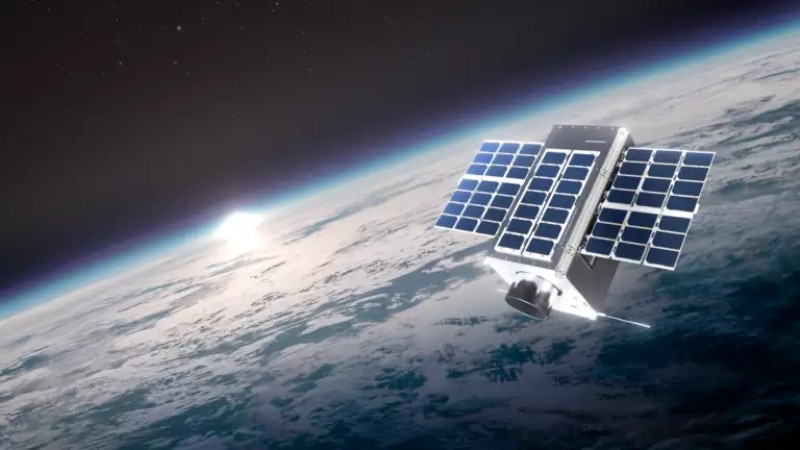GHGSat, a Canadian firm monitoring greenhouse gas emissions, has successfully launched the world's first commercial space-based sensor, Vanguard.
Reuters tells us that this cutting-edge orbital sensor is designed to detect carbon dioxide emissions from individual industrial facilities, such as cement or power plants, and its launch from Vandenberg Space Force Base in California marks a significant advancement in carbon emissions monitoring.

GHGSat's Vanguard Satellite
GHGSat's Vanguard satellite leverages the company's extensive experience detecting methane emissions and is considered a precursor to a new generation of space instruments.
With this new technology, GHGSat aims to provide frequent, accurate, and independent high-resolution carbon dioxide data from individual sites, revolutionizing how we monitor and report carbon dioxide emissions.
The satellite's capabilities are truly remarkable. Vanguard offers high spatial resolution, allowing it to focus on individual targets and accurately attribute emissions.
While public carbon dioxide emission detection satellites are in orbit, they are not designed to pinpoint specific facilities. This is where Vanguard stands out.
The satellite will grant operators of steel mills, power plants, and petrochemical complexes access to independent, accurate, and globally standardized emissions monitoring and data.
Accurate and Trusted Data
ABP Live tells us that high-resolution carbon dioxide data collected by Vanguard will add significant accuracy to emissions inventories at both the national and international levels.
Moreover, this data will enhance the accuracy of the Global Stocktake, an assessment of progress made toward mitigating global warming since the Paris Agreement 2015.
At the upcoming COP28, the results from the first-ever global stocktake will be discussed, emphasizing the relevance and importance of this groundbreaking technology.
The significance of Vanguard goes beyond the industrial sector. With accurate and trusted data, industries can be incentivized to manage emissions effectively. This will ensure that climate policies are well-founded, helping the world stay on track to achieve Net Zero emissions by 2050, a critical goal for combating climate change.
GHGSat's data is available for sale to industrial emitters, governments, and scientists, offering an opportunity for industries to make data-driven decisions in reducing their emissions.
The launch of Vanguard adds to the growing network of satellites already detecting emissions from space, holding industries accountable for their contributions to climate change.
Net Zero Emissions by 2050
Space-based technology is becoming increasingly essential in combating climate change, with the potential to revolutionize emissions monitoring and reduce the environmental impact of industrial facilities.
Vanguard's high-resolution data will help bolster the accuracy of government emissions inventories, support scientific modeling, and improve the quality of corporate greenhouse gas reporting for investors.
Stephane Germain, CEO at GHGSat, believes that Vanguard will change the conversation around carbon dioxide emissions, making industries more accountable and ultimately contributing to the achievement of Net Zero emissions by 2050.
Stay posted here at Tech Times.
Related Article : SpaceX's SES O3b mPOWER Falcon 9 Mission Launches to Orbit Later Today: How, Where to Watch

![Apple Watch Series 10 [GPS 42mm]](https://d.techtimes.com/en/full/453899/apple-watch-series-10-gps-42mm.jpg?w=184&h=103&f=9fb3c2ea2db928c663d1d2eadbcb3e52)



